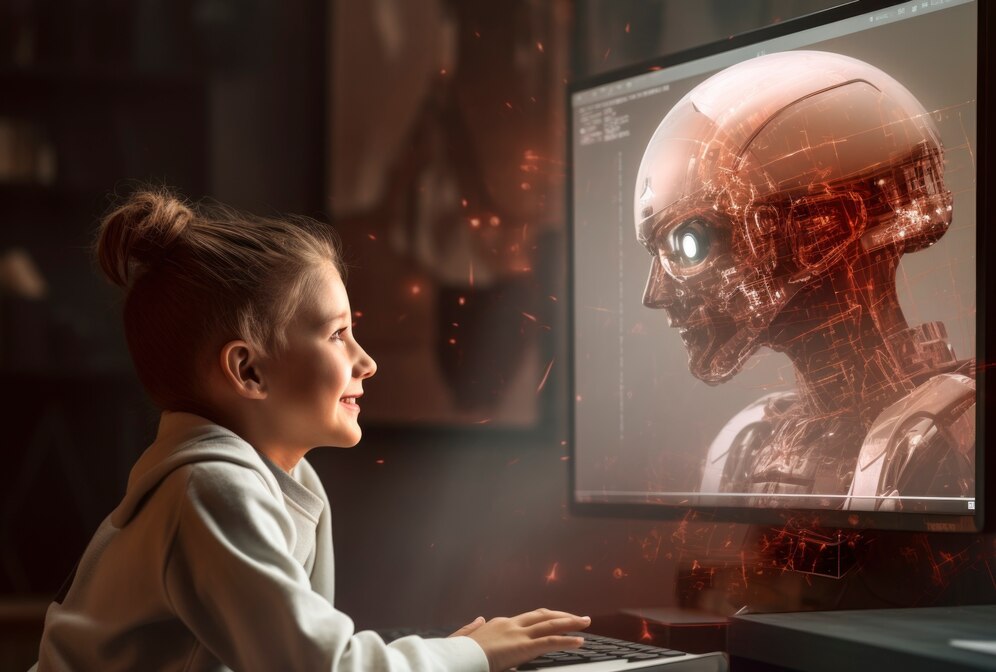Bytes-Based Learning: Understanding the Impact of AI on Education
Gone are the days of traditional teaching methods like rote memorization and one-size-fits-all instruction. Education is evolving rapidly, largely due to the influence of Artificial Intelligence (AI). AI in education isn’t science fiction—it’s the new reality, reshaping the ways we learn, teach, and gain access to knowledge. Let’s dive into The Impact of AI on Education to understand how it’s transforming the educational landscape.
What is AI’s Role in Modern Education?
Artificial Intelligence simulates human thought processes in machines. In education, it uses technologies like machine learning, natural language processing (NLP), and data analysis to support teaching, automate routine tasks, and adapt to individual learning needs. AI provides powerful tools for educators and students, whether it’s designing lesson plans, grading, or offering tailored resources that make learning more efficient.
Why is AI Becoming Essential in Education?
AI is transforming education by allowing for personalized learning experiences, making it a key tool for enhancing educational practices. It can adapt to each student’s needs, making learning as unique as each individual.
Customized Learning Experiences
Imagine a learning environment that changes according to each student’s strengths and weaknesses. AI uses data to create a customized learning pathway, ensuring students aren’t wasting time on material they already understand or struggling with challenging topics without support. With AI’s help, students have access to interactive exercises, real-time feedback, and resources that adapt to their individual learning needs. This personalized experience is one of the biggest benefits of The Impact of AI on Education as it reduces frustration and promotes a deeper understanding of the material.

AI-Enhanced Content Creation
AI technology doesn’t only personalize learning—it also helps create educational content. With tools like NLP, educators can quickly produce quizzes, assignments, and interactive learning activities. This helps teachers spend more time focusing on critical aspects of teaching, while students enjoy creative and engaging resources that make learning more enjoyable and effective.
Removing Barriers in Education
Everyone should have access to education, regardless of where they live or their background. AI brings the world of knowledge to anyone with internet access. By removing geographical and socioeconomic barriers, students everywhere—from large cities to remote areas—have access to the same high-quality educational resources. Additionally, AI-based tools like language translators and assistive technologies make learning accessible to students with disabilities.
Empowering Teachers with AI Support
While some worry that AI may replace teachers, it’s more accurate to say AI complements their role. By taking on repetitive tasks like grading and organizing schedules, AI frees up teachers’ time for one-on-one engagement with students. AI analyzes student data to help teachers identify areas where individual students may need extra support, allowing them to tailor their teaching methods. The Impact of AI on Education is evident here, as teachers can focus on inspiring and guiding students rather than managing routine tasks.
Real-Time Feedback for Deeper Learning
AI can improve assessment practices by providing immediate feedback. Traditional tests don’t always provide insights that help students understand their learning gaps. AI-based assessments use adaptive algorithms to analyze responses instantly, offering students real-time insights into their strengths and weaknesses. This aspect of The Impact of AI on Education encourages continuous improvement and helps students achieve their full potential.
Addressing AI’s Challenges in Education
Despite its benefits, the use of AI in education comes with certain challenges.
Job Concerns
With AI automating various educational tasks, there’s a potential impact on traditional teaching roles. Ensuring that AI complements rather than replaces educators is key to maintaining a balanced approach to learning.
Over-Reliance on Technology
AI is a powerful educational tool, but over-reliance on it may limit students’ critical thinking and problem-solving skills. Human guidance remains essential for nurturing creativity and interpersonal skills, skills that technology alone cannot provide.
Ethical and Privacy Considerations
AI in education brings up ethical issues, especially regarding data privacy and algorithmic bias. Schools and policymakers must establish clear standards to ensure fairness and protect student data. Ethical use of AI tools must prioritize transparency and equal access for all students, ensuring that these technologies support rather than hinder educational equity.
Implementing AI in Schools
To successfully incorporate AI in education, it’s essential to provide comprehensive training for educators and ensure equitable access to technology. Bias in algorithms and data issues can negatively impact students, so ethical and responsible AI development must be a priority.
Best Practices: A Balanced Approach
Combining AI’s efficiency with human interaction creates a more holistic learning environment. Human involvement is crucial to ensuring students develop a well-rounded skill set, while AI offers personalized support that makes learning more effective.
A Collaborative Future in Education
The future of education with AI isn’t about automated classrooms; it’s about collaboration. Teachers, students, tech developers, and policymakers must work together to maximize The Impact of AI on Education. Imagine a future where each student has a learning experience tailored to their needs, making education inclusive and effective. AI has immense potential to transform education positively, but it’s up to us to steer it toward a future that promotes access, equity, and empowerment.
Conclusion
AI in education is more than just a trend—it’s a force reshaping how we approach learning. The Impact of AI on Education lies in its ability to provide personalized learning experiences, streamline tasks for educators, and make quality education more accessible. However, addressing its challenges, including job displacement, over-reliance, and ethical concerns, is crucial for its responsible use. By balancing AI’s strengths with human interaction, we can create an education system that prepares students for a successful future.
The integration of AI in education is not just about smart machines; it’s about cultivating a learning environment that combines the best of technology and human insight. Together, we can shape an educational future that is inclusive, innovative, and ready to meet the demands of tomorrow’s world.
